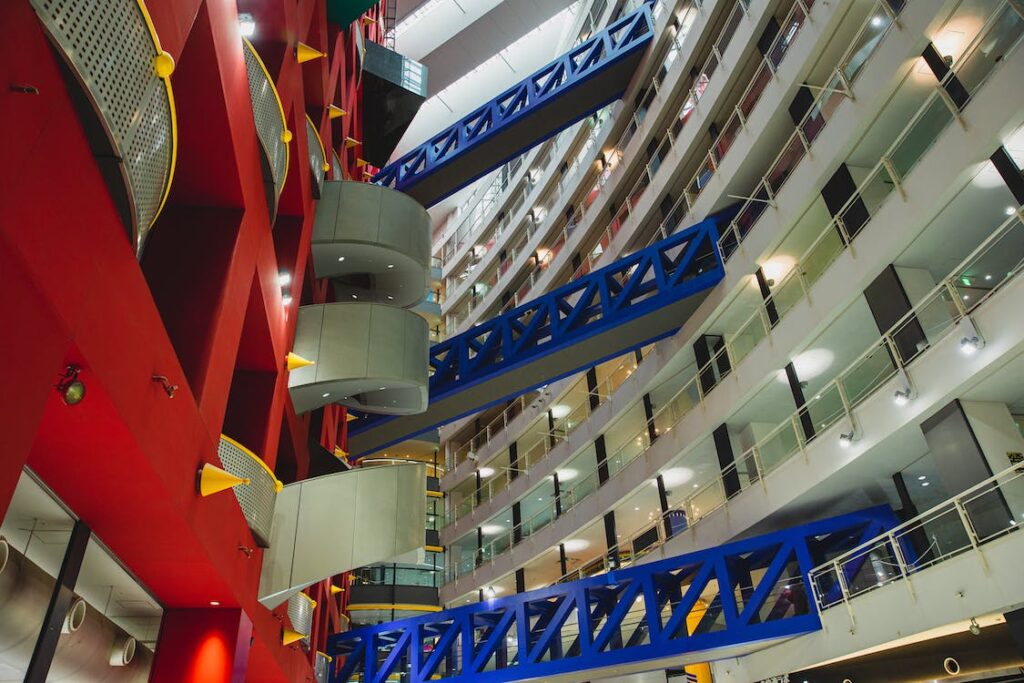Trade shows and exhibitions are an important opportunity for businesses to showcase their products and services and build new partnerships with industry players. It is also a venue at which a business can conduct a significant amount of analysis regarding market trends, and generate, and follow up on potential leads. It is standard practice to set up a booth or a display to do so, thereby allowing visitors and onlookers to learn more about what there is on offer. Taking on such a passive approach, however, will not give you the highest possible return on your investment – which is what an exhibition is.
An exhibition should be used to generate as much interest and engagement in what a business has to offer as possible. There is no other occasion in which people will be in attendance with the sole intention of discovering new products and services, exploring partnerships, and the like. But how does a business go about optimizing this opportunity in a manner that can be transformed into actual sales values? Proper planning, of course, is key.

Planning out the optimal exhibition stand/display/stall
The space that a company ends up within an exhibition is the single most important factor that will decide how much interest it manages to garner during the event. This is because the exposure a stall receives will often depend on its situation in the exhibition premises as a whole. A stand on the end of an aisle or in a corner for example will attract eyeballs moving in two different directions. Booking a location/space early with exhibition organisers will also likely result in better deals offered for early booking. Once the space is reserved, it is important that the exhibition stand itself is designed with this particular space in mind, and in a way that is both eye-catching and different from the rest.
An exhibition stall or display is useless if it is not sufficiently manned to engage with anyone who may be interested in it. The people manning the stall should be the most suitable and capable individuals or teams for the event. It is vital that these individuals possess sufficient industrial and subject knowledge to be conversant with both a general visitor and an industry expert or professional. This requires a level of charisma and confidence that not everyone may possess. The exhibition stall itself – despite being a marketing opportunity on its own – will require some level of pre-event marketing to ensure that the most is made out of every occasion. This is so that any interested party or individual will know what to check out beforehand, as visitors often have an idea of what they want to see even before they step onto the exhibition grounds.
Use quality marketing materials

Marketing materials are the next important addition to an exhibition booth that has the ability to drive a business’s return on investment. From brochures, flyers, and business cards to other promotional material, it is important that these marketing material represents both your brand’s value and its values. Utilizing the use of technology can also be a helpful way to make the most of the marketing opportunity that the exhibition represents. Digital displays can make for a more interactive experience for visitors, as can interactive screens and the like. The latest in augmented reality, for example, can make for a truly memorable experience that will ensure a brand name’s longevity in the audience’s mind.
It is important to explore the range of options that are at your disposal for both affordability as well as suitability to make sure that the most optimal choices are made. The manner in which the latest in exhibition technology such as interactive flooring, beacons, mobile apps, and virtual walls are leveraged will increase engagement and help a business stand out from the crowd. They also have the potential to break a company’s budget. This is the information age, and the current economy is frequently described as an ‘experience economy’. A simple definition of the term is that an ‘experience economy is an economy in which many goods or services are sold by emphasizing the effect they can have on people’s lives’. In an age where experiences are in a category of their own, therefore, it is important that technology is used to showcase what a brand has to offer in a way that an audience is both compelled to experience more and ‘see’ the manner in which a brand could enrich their own lives.
Post-event reconnaissance
Most businesses make the right calls in organising and successfully executing their exhibition projects on the day of the event, and yet drop the ball in following up afterwards. And yet, the sales cycle is not complete until a business actually closes a deal after the trade show or exhibition. Successful deals post-exhibition is of course the result of extensive post-event engagement. Some businesses actually start their post-event PR while the event is still taking place, broadcasting live on their socials so that there is VOD content that audiences can later access and engage with. Another element of post-event reconciliation that needs to happen while the event is still underway is collecting the points of data necessary to follow up on all the connections that a business makes over the course of the event. This includes phone numbers, social media handles, emails, LinkedIn profiles, and the like. It is important to remember that various demographics will have their own preferred mode of contact and may react negatively to being ‘bothered’ through other channels.
The manner in which businesses reach out to contacts made through trade shows and exhibitions are many and can include anything from a telephone call to an elaborate hamper. It is important that a business invests whatever it is capable of, even if it only amounts to time and effort, into building on every interaction that takes place during an exhibition. Not every single one of these interactions will necessarily yield sales on their own and yet can represent a valuable connection that could prove beneficial later on down the line. A positive interaction, for example, can mean the difference in having an otherwise disinterested party advocate for another’s business interest. It’s important to remember that word of mouth is still unparalleled in spurring brand growth, anywhere in the world.
The final and most important point to bear in mind about tradeshows is that it is natural to feel a sense of disappointment about potential missed opportunities and less-than-expected results. Even in such an event, a business still has much to gain in terms of experience and lessons learnt. Perfection takes repetition and fortunately, trade exhibitions and shows are often exactly that.
(Theruni Liyanage)
